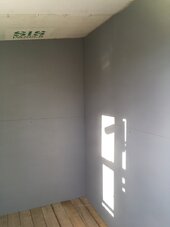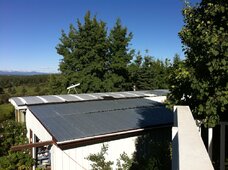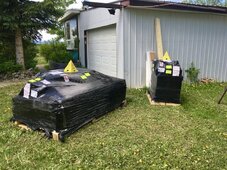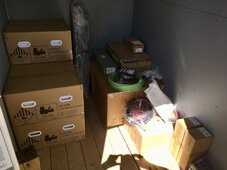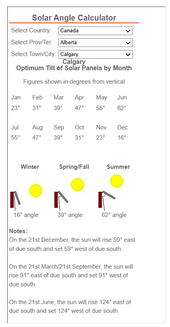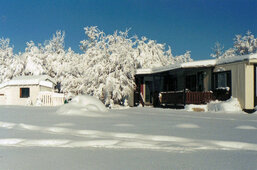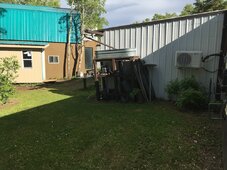Skythings
New Member
So - Let the games begin. I have been spending the last year or so reading all your posts and watching Will Prowse YouTube video's educating myself about solar power. So far I know nothing....... but every day I add a few grains of sand into my reservoir of knowledge. Pretty steep learning curve.
As a newbie I have been and will continue to be pretty naive about pulling this off. My first discovery is most of the information available on-line is USA based and not always applicable here in Canada. The rules vary between the two countries, between States & Provinces and even local municipalities. So be careful when you think you have things nailed. Likely you don't & I know I'm due for many future surprises. Next I learned most of the self appointed professionals in the solar business I have encountered so far are actually salespeople first and have a high distain for DIYer's and not too keen to share their industry knowledge. I have read here on this site it mentioned a few times that Calgary seems to be a difficult place for credible help in the solar field.
I live on a farm and my goal is to have reliable power and emergency backup as I envision a declining & less reliable electrical grid in the future. I will not be selling back to the provider. The self appointed pro's just can't seem to get their heads around the fact I'm not interested in saving money on my power bill. I am completing the project in three stages. My first stage is to set up an inverter with 25 Kwh of battery storage with one string of solar panels. My end goal is to achieve 3 strings or solar panels and 75 Kwh of battery storage.
Because in Canada there are some strict rules regarding battery storage I decided to go with a dedicated solar shed for the inverter & batteries. The shed is 75 feet away from my house and is insulated and will have a small direct vent heater for our Canadian winters to maintain battery operating temps. This will allow me up to 80 Kwh of battery storage based on the Canadian fire code rules for battery storage. I am just putting the finishing touches on it now and the inside is currently an Electricians blank canvas. See the pictures.
I decided to go with the Sol-Ark 15K-2P-N inverter with five rack mounted SOK SK48V100 batteries with 10 LONGI 540W panels mounted on my carport roof. That's stage one. I just received a call today and the truck is scheduled for delivering the equipment tomorrow. My electrician is finalizing the approvals with the power company and I hope to get things going in the next couple of weeks.
I just wanted to thank many of the folks on this forum and your posts which have been very helpful for me on this journey thus far. I will continue to read your posts and learn from your experiences also. I will be looking for advice and trouble shooting help as the installation and commissioning commences. I will post some updates & pictures also. Please feel free to send me any advice you might think will be applicable to my setup.
As a newbie I have been and will continue to be pretty naive about pulling this off. My first discovery is most of the information available on-line is USA based and not always applicable here in Canada. The rules vary between the two countries, between States & Provinces and even local municipalities. So be careful when you think you have things nailed. Likely you don't & I know I'm due for many future surprises. Next I learned most of the self appointed professionals in the solar business I have encountered so far are actually salespeople first and have a high distain for DIYer's and not too keen to share their industry knowledge. I have read here on this site it mentioned a few times that Calgary seems to be a difficult place for credible help in the solar field.
I live on a farm and my goal is to have reliable power and emergency backup as I envision a declining & less reliable electrical grid in the future. I will not be selling back to the provider. The self appointed pro's just can't seem to get their heads around the fact I'm not interested in saving money on my power bill. I am completing the project in three stages. My first stage is to set up an inverter with 25 Kwh of battery storage with one string of solar panels. My end goal is to achieve 3 strings or solar panels and 75 Kwh of battery storage.
Because in Canada there are some strict rules regarding battery storage I decided to go with a dedicated solar shed for the inverter & batteries. The shed is 75 feet away from my house and is insulated and will have a small direct vent heater for our Canadian winters to maintain battery operating temps. This will allow me up to 80 Kwh of battery storage based on the Canadian fire code rules for battery storage. I am just putting the finishing touches on it now and the inside is currently an Electricians blank canvas. See the pictures.
I decided to go with the Sol-Ark 15K-2P-N inverter with five rack mounted SOK SK48V100 batteries with 10 LONGI 540W panels mounted on my carport roof. That's stage one. I just received a call today and the truck is scheduled for delivering the equipment tomorrow. My electrician is finalizing the approvals with the power company and I hope to get things going in the next couple of weeks.
I just wanted to thank many of the folks on this forum and your posts which have been very helpful for me on this journey thus far. I will continue to read your posts and learn from your experiences also. I will be looking for advice and trouble shooting help as the installation and commissioning commences. I will post some updates & pictures also. Please feel free to send me any advice you might think will be applicable to my setup.




